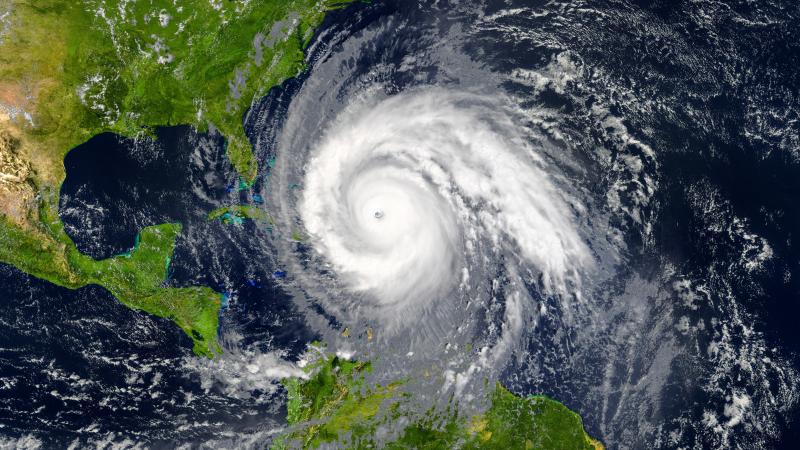Model shows significant delays in recovery efforts if front-line workers are not kept healthy
June 1, 2020

TROY, NY — As coastal communities prepare for the possibility of hurricanes this summer and fall, they are doing so amid the uncertain landscape of the COVID-19 pandemic — a crisis that has already taxed health care systems, governments, and supply chains.
A faculty and student team at Rensselaer Polytechnic Institute has been modeling how the combined disasters may make community recovery vastly more difficult. What they have found serves as a stark warning to policymakers preparing for hurricane season.
“By their nature, extreme events are rare and unpredictable,” said Al Wallace, a professor and head of the Department of Industrial and Systems Engineering at Rensselaer. “It is difficult to comprehend the multiplicity of possible paths over which an event could unfold and how best to respond. Still, we must keep our heads up to anticipate what could be coming, even as the problems plaguing us at the moment command an extraordinary amount of attention.”
Wallace uses a customizable artificial community, digitally created at Rensselaer with support of a grant from the U.S. Department of Homeland Security, to simulate scenarios that may become realities during hurricane season. This model town mimics a coastal community in North Carolina with a population of about 450,000 people.
Using this model, Wallace, his student Madeline Roberts, a member of the Rensselaer Class of 2020, and Richard Little, a visiting research scholar at Rensselaer, simulated the increasingly plausible scenario of a hurricane recovery effort that must take place in the context of the COVID-19 pandemic.
Their findings underscore the importance of maintaining a healthy workforce of first responders, especially in health care facilities, which are also likely to be the hardest hit by both of the converging crises.
“We found that when the number of workers decrease, in whatever pandemic-related situation exists — illness or inability to travel to a location — the response time and recovery for that community actually is delayed by a factor of three. Which is huge,” Roberts said. “Another big finding was that the most heavily impacted areas are the ones most vulnerable — the hospitals, the nursing homes. When the water goes out, when the power goes out, the death rate is going to go up and the infection spread is just going to snowball.”
The team’s modeling revealed that when the available workforce is reduced during a pandemic, the number of civil infrastructure outages during a hurricane increases. More specifically, the model showed a large number of power, water, and waste outages during a combined crisis situation.
Wallace and Roberts also found — based on their model — that power and water outages are three times more likely to occur than other types of disruptions in infrastructure.
A loss of water and power, Wallace points out, could bring about heightened risks for those who rely on regular medical treatment. In previous hurricanes, access to dialysis services, for example, has been threatened when critical infrastructure like roads and power lines are damaged.
“Given the demographics of a condition like kidney disease — which disproportionately affects minorities, the poor, and elderly — many of the populations most at risk in the COVID-19 pandemic are also particularly vulnerable in a hurricane scenario,” Wallace said.
Wallace and Roberts hope their research will encourage policymakers to use data and simulations to begin comprehensive preparations for the upcoming hurricane season with urgency and efficiency.
“We have an unprecedented opportunity to take advantage of large datasets, online visual displays, and high-speed computing,” Wallace said, “to greatly accelerate the learning curve for public officials, emergency managers, infrastructure service providers, and members of the medical community who are responsible for maintaining a functioning health care system.”